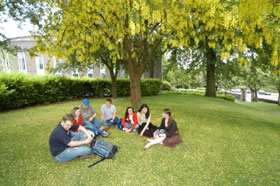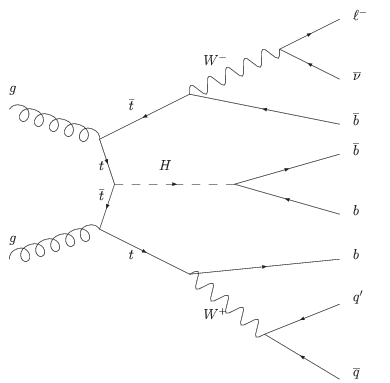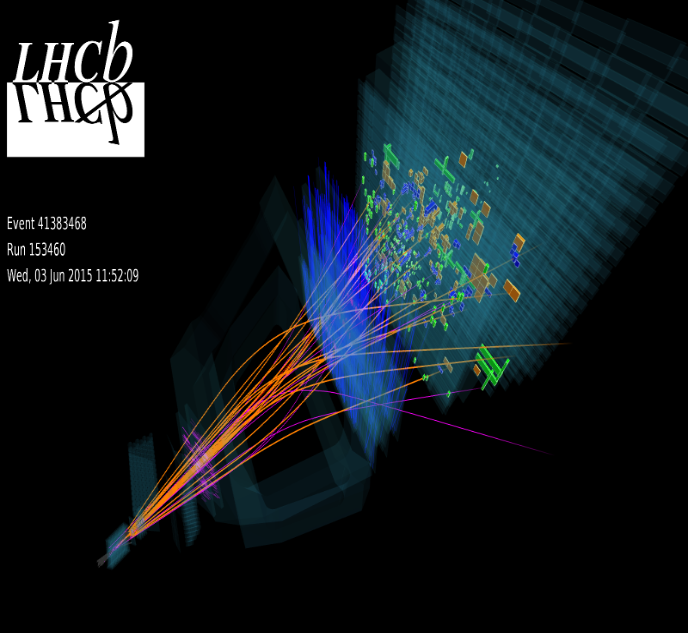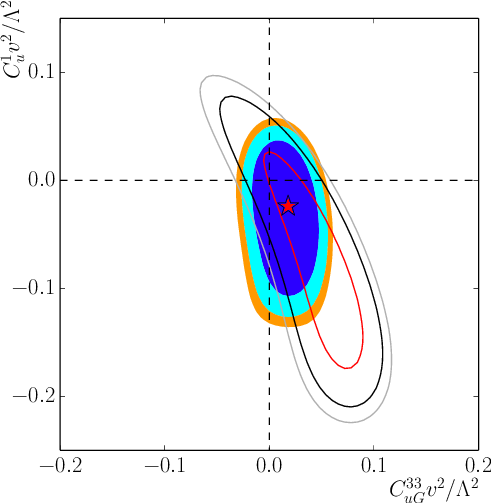Summer Student Opportunities 2018
Summer Student Opportunities 2018
 The Particle Physics Experiment (PPE) group, in conjunction with the School of Physics & Astronomy, operates an annual summer student scheme whereby undergraduates can work on a research topic in experimental particle physics.
The Particle Physics Experiment (PPE) group, in conjunction with the School of Physics & Astronomy, operates an annual summer student scheme whereby undergraduates can work on a research topic in experimental particle physics.
Students are typically funded for 6 weeks during a pre-arranged period over the summer (June-September). Please note that preference is given to 3rd and 4th year students. This opportunity is typically for University of Glasgow students, although students from elsewhere have also been supported.
The list of projects available for Summer 2018 is now open to applications and the submission deadline is Monday 5th March.
Note that the additional costs of travel and accommodation cannot be met by the Group/School.
Application Procedure
Eligibility: Please note that only students who are currently enrolled to study for a further year after the summer are eligible for funding (for example, students due to finish their third year, or students due to finish their fourth year but are already accepted to a 5-year MSci degree). Priority will be given to students who are very passionate about experimental particle physics and feel they would like to continue with a PhD in this topic.
Requirement: Students who are accepted onto the Summer School programme must write a report at the end of their 6-week project, which provides an opportunity to further their communication skills.
Application: Applications should be sent by email to Michael Alexander with title "PPE summer project application".
Your application must contain the following documents as .pdf files, with a naming convention of last name, first name, followed by the document type (offering my name as an example):
- AlexanderMichaelCV.pdf (CV);
- AlexanderMichaelInterest.pdf (a brief statement of research interest);
- AlexanderMichaelResearch.pdf (a brief description of any research you have done previously, as well as computing projects);
- AlexanderMichaelGrades.pdf (a record of your grades obtained so far at university);
- AlexanderMichaelProjects.pdf (a ranked list of your preferred projects as offered);
- in addition, information on any presentations, posters or reports that you have written for any research or academic projects, which will help us to judge your scientific communication skills. It always reflects very nicely on the student if the documents are written in Latex, and not in Word, as within the science community project reports are written in Latex.
Process: Applications will be ranked by merit. Using the matrix of ranked students/ranked preferred projects per students, students will be suggested to supervisors, who will look at the student applications and may then set up an informal meeting to see if the student has the skills and interest needed for that particular project. For this reason students are encouraged to contact the supervisors direct during this application time in order to learn more about the projects, so that they are well informed when choosing an ordered list of preferred projects.
Funding: The projects (formed by a pair of supervisor and student) will enter into competition for funding with other projects from other physics groups, the final decision resting with the Head of School. On average, 4-5 projects for the particle physics experimental (PPE) group are funded every year. This year we aim to fund 6 projects in PPE.
Previous Schools: Please see the list on the left for details of previous years' summer student projects.
Page updated 12/02/2017
Quantum chromodynamics and jet flavour with ATLAS
In the quantum-theory calculations used to make predictions at the Large Hadron Collider, objects which interact via the strong nuclear force are often produced: these are quarks and gluons, or collectively "partons". But our understanding of quantum chromodynamics (QCD) tells us that partons cannot be directly observed: on nuclear length- and time-scales they radiate and combine into jets of QCD-singlet "hadrons". But not all jets are the same: calculations suggest that those initiated by gluons typically contain more hadrons than quark-jets, and jets initiated by heavier quarks should have other differences in the distribution of their hadrons. In this project we will investigate, in simulation and using ATLAS data, the observable effects of differences in the initial partons, and whether observables can be used to tell us something theoretically sound about their parton identity.
Project type: simulation and data analysis.
Prerequisites: Linux and good scientific programming experience in Python/C++.
Preferred dates: June-August
Main Supervisor: Andy Buckley
Second Supervisor: TBA
New limits on new-physics with combined LHC data
One of the major goals of the Large Hadron Collider is to search for evidence of new physics beyond the Standard Model. This involves analysing many collision events, making many requirements ("cuts") on each one's contents and properties, then looking for deviations from the expected background rate for each combination of cuts. In this project we will reproduce some currently leading-edge new-physics analyses from the ATLAS and CMS experiments, using the Razor and Recursive Jigsaw techniques, and combine their predictions in a statistical fit that places new limits on a BSM physics model.
Project Type: Data analysis.
Prerequisites: Linux, good scientific programming experience in Python/C++, and basic statistics..
Preferred Dates: June-August
Main Supervisor: Andy Buckley
Second Supervisor: TBA
Beyond Silicon!
Silicon has been the dominant semi-conductor for particle physics sensor applications. An industry has grown around its fabrication and exploitation. Today most of the tracking detectors in LHC experiments are silicon sensors. However, there are applications for which silicon is not the optimum or appropriate sensing material, e.g. where the incident radiation energy is too high. Cadmium Zinc Telluride (CZT) is an alternative to silicon for applications from medical imaging and space sciences to industrial quality control and material studies at synchrotrons.
The PPE group has been involved in CZT research for years, contributing to development commercially available products. This involves testing proto-type detectors at testbeam facilities such as the Diamond Light Source where high energy X-rays are used to study detector properties such as Time-Of-Arrival and Time-Over-Threshold. These values characterise the performance capability of the detector in spectroscopic and imaging applications.
You will be involved in analysing data collected using novel 110 µm CZT pixel sensors using 80 keV X-rays at Diamond. You will help quantify parameters of importance in future detector manufacture and radiation measurement in several applied physics contexts, especially involving hard X-rays. We will obtain valuable information for the manufacture of CZT detector assemblies by studying electronic performance and detection efficiencies. A better understanding of charge collection with high thickness-to-pitch ratio devices will help improve algorithms dealing with small pixel effects. These results will be of importance to detector fabrication and inform a range of applications, including the synchrotron community and beyond.
Project Type: Data analysis.
Prerequisites: Some familiarity with Linus and C++; some experience of Python preferred but not essential.
Preferred Dates: June or August (negotiable).
Main Supervisor: Kenneth Wraight
Second Supervisor: Dima Maneuski
Using Machine Learning to probe interaction between the Higgs boson & Top Quark

Production of a top-quark pair in association with a Higgs-boson, where the Higgs-boson decays into a b-quark pair.
One of the important physics goals of the Large Hadron Collider is to study the characteristics of the Higgs boson, for example its coupling to other fundamental particles. Being the heaviest quark, the top quark has the strongest coupling to the Higgs boson (Yukawa-coupling) and so the measurement of this coupling is therefore one of the most interesting tests of the Standard Model Higgs Boson. This coupling can be probed by studying the production of Higgs bosons in association with top-quark pairs; the ttH channel. This channel is very challenging, since it suffers from large backgrounds (background: events with different production processes, that can look similar to the signal). The main background is the production of a top-quark pair with an additional b-quark pair, since it has exactly the same final state particles (irreducible background). The discrimination of ttH- and ttbb-events is therefore of the utmost importance to the sensitivity of the ttH channel. This summer project focuses on investigating the use of Machine Learning techniques to improve the signal/background separation.
Project type: Data analysis.
Prerequisites: Good familiarity with Linux, C++ and Python and/or shell scripting.
Preferred dates: July-September
Main Supervisor: Sarah Boutle
Second Supervisor: Mark Owen
Matter-anti-matter asymmetries at the LHCb experiment

A proton-proton collision recorded by LHCb from May 2017
The LHCb experiment at the Large Hadron Collider (LHC), CERN, is designed specifically to make high precision measurements of decays of hadrons containing charm and beauty quarks. These are compared to the theoretical predictions of the Standard Model (SM) in order to look for discrepancies which may indicate new physics effects. Measurement of the lifetimes of charmed hadrons are challenging, both theoretically and experimentally, but with sufficient precision may reveal new physics. Should a discrepancy between theory and experiment be found this could indicate interference from non-SM particles, which can enhance or suppress the decay of charmed hadrons. LHCb has recorded the largest datasets of decays of charmed hadrons in the world. Combined with its high precision tracking system this makes it an ideal place to perform such tests of the SM.
Using both real and simulated data from LHCb you will work towards a measurement of the decay time dependent matter-anti-matter asymmetry of neutral charmed mesons. This will require extensive use of the ROOT data analysis software package in order to parametrise signal background, account for detector resolution and efficiency effects, and extract the lifetime of the signal decays.
Project Type: Data analysis.
Prerequisites: Some programming experience, particularly with Linux shell scripting, C++ and Python. Prior experience with ROOT would be beneficial, but not essential.
Dates Available: June-August.
Main Supervisor: Michael Alexander
Second Supervisor: Lars Eklund
Study of ttZ event topology in challenging phase space regions

Example of Feynman diagrams for the ttZ production
The top quark has been discovered in 1995, since then the study of the peculiar characteristics of this particle has been at the centre of the physics program of many accelerator experiments. The top quark is the fundamental particle with highest mass discovered until now and for this reason is strictly related with the Higgs boson and is involved in many models of physics beyond the standard model.
After 23 years since its discovery there are still various aspects of this peculiar and massive particle that haven't been investigated in detail. One of these is the coupling with the Z boson. Many new models predict a modification of this parameter and it is consequently important to perform precise measurements of the tZ coupling to constrain these predictions. The measurement of the ttZ production gives direct access to this coupling. This process is rare compared to other processes studied at LHC, but the large sample of data that is being collected by the ATLAS experiment at √s =13 TeV in the last years opens the possibility to perform a precise study, including also challenging regions of phase space where the Z and/or the top quark are produced with high transverse momentum.
The aim of the project is to study the event structure of the ttZ in this region of the phase space and understand which could be the better channel to perform the measurement using the data collected by ATLAS in 2018.
Project Type: Data analysis.
Prerequisites: Some programming experience, particularly with C++ and shell scripting. Prior experience with Python and ROOT would be beneficial, but not essential.
Dates Available: June-July
Main Supervisor: Federica Fabbri
Second Supervisor: Mark Owen
Robustness tests of the LHCb Flavour Tagging
The LHCb experiment records particles produced in proton-proton collisions from the Large Hadron Collider at CERN (Geneva) to perform precision measurements of CP violation and rare decays in the beauty and charm sector. An essential issue for many CP violation measurements is the tagging of the production flavour of B mesons i.e. if a neutral B meson contains a b quark or an anti-b quark at the time it is produced. Since b quark are produced in pairs at the LHC, flavour tagging algorithms try to predict on a statistical basis the production flavour based on the decay of the other b of the pair, or based on the fragmentation of the spectator quark that helps to form the B meson of interest.
The aim of this project is to better understand the performance of the algorithms that tag a B candidate as either B or Bbar as a function of event properties, such as number of reconstructed charged particle tracks, number of primacy vertices (one can have more than one proton-proton collision at the same time), or similar.
The project will thus allow the student to gain good familiarity with the basic concepts of flavour tagging and charged track reconstruction in a high energy physics experiment, and gain an insight into some of the building blocks of CP violation measurements such as those done by LHCb. Moreover, the project will illustrate how robust the current flavour tagging algorithms are in events with many tracks, primary vertices, or fake tracks, thus helping to pinpoint where further work is needed for the LHCb Upgrade which is expected to be dominated by these more difficult events.
Project Type: Data analysis, software
Prerequisites: some familiarity with particle/detector physics, Linux, C++ and/or Python would be beneficial, but interest in the topic is the main factor.
Preferred Dates: June-August
Main Supervisor: Manuel Schiller
Second Supervisor: TBC
Silicon detector teaching tool
The use of silicon detectors in physics experiments, scientific and industrial applications has developed enormously over the past few decades. The Glasgow Particle Physics group has been a leader in their development for particle physics experiments but also in the development of the underlying technology of pixelated hybrid detectors, most notably via the Medipix collaborations. As the use of silicon based detectors increase, the need for accessible teaching aids to explain the fundamentals of the device to graduate students increases. The Glasgow group has for the past decade been part of an international graduate school programme in physics instrumentation aimed at students in more developing countries (for example Argentina and Colombia). As part of this school we have developed a teaching tool to explain the basics of the silicon detector. This, however, requires external instruments (pulse generator, HV power supply, external amplifiers) which can be expensive to purchase and bulky to transport. The project will develop custom circuits based on cheap off-the-shelf components to build a simple silicon pad detector characterisation apparatus for graduate teaching. The work builds on an existing apparatus and laboratory script.
Project Type: Applied physics/engineering.
Prerequisites: The student should have some previous experience of electronics. PCB design and build experience is not required as this will be taught during the project.
Preferred Dates: June-August
Main Supervisor: Richard Bates
Second Supervisor: Lars Eklund
Simulating Equalisation for High-Speed Data Links
The experiments based at the LHC have been hugely successful in making discoveries and performing precision measurements with the data collected at the highest energy particle physics collider ever built. Highlights include the discovery of the Higgs particle (at ATLAS and CMS) and precision measurements constraining physics beyond the Standard Model (at LHCb).
To further our knowledge, the experiments will be upgraded to be able to take data at even higher luminosity to significantly increase the available statistics. The LHCb experiment will be upgraded in 2018 to use the full luminosity of the present LHC. In 2023 ATLAS will be upgraded at the same time that the LHC machine is replaced by the High Luminosity LHC, with an order of magnitude higher luminosity.
Both these upgrades result in order of magnitude increases in interaction rate in the experiments. To take advantage of this the experiments' data recording and transmission rates must be similarly increased. The data rates expected from the LHCb and ATLAS silicon pixel detector systems are predicted to be 5 Gb/s, which is unprecedented in particle physics experiments. This data must be transmitted electrically for a number of meters before being converted into an optical signal. Such data rates make broadband speeds seem rather lacklustre with the faster package (Virgin fibre optic) boasting a pitiful 200 Mb/s.
The development of the highly performant data transmission cables is being led by the Glasgow group for both the LHCb and ATLAS experiments as well as testing the full link performance. At the moment we have a set-up which allows us to test full links: chip (velopix), cables, flexes, opto-box and vacuum feed-through. According to the characterization results, in order to be able to recover data from the detector due to the losses introduced by different items of the link we must include in the link a new ASIC, an equalizer. The purpose of this equalizer is to counteract the losses of the link. The idea is that we would like a flat frequency response of the electrical transmission link; however the high frequencies are attenuated by the link so we try to boost them by this chip.
The project will consist in simulating different conceptual designs of equalizers and then testing how commercial equalizers perform in the full link which requires a general knowledge of a transmission chain. It is a hands-on project that combines computer simulations with hardware so it will be a great way of understanding signal integrity fundaments.
Project Type: Measurements, simulations and data analysis
Prerequisites: Interest in electronics is beneficial but not required
Preferred Dates: Mid-June to end-July
Main Supervisor: Richard Bates
Second Supervisor: Leyre Flores
Measurement of charmed hadron lifetimes at the LHCb experiment

A proton-proton collision recorded by LHCb from June 2015
The LhCb experiment on the Large Hadron Collider (LHC) at CERN is designed specifically to make high precision measurements of decays of hadrons containing charm and beauty quarks. These are compared to the theoretical predictions of the Standard Model (SM) in order to look for discrepancies which may indicate new physics effects. Measurement of the lifetimes of charmed hadrons are challenging, both theoretically and experimentally, but with sufficient precision may reveal new physics. Should a discrepancy between theory and experiment be found this could indicate interference from non-SM particles, which can enhance or suppress the decay of charmed hadrons. LHCb has recorded the largest datasets of decays of charmed hadrons in the world. Combined with its high precision tracking system this makes it an ideal place to perform such tests of the SM.
Using both real and simulated data from LHCb you will work towards a measurement of the lifetime of one or more species of charmed hadron. This will require extensive use of the ROOT data analysis software package in order to parametrise signal and background, account for detector resolution and efficiency effects, and extract the lifetime of the signal decays.
Prerequisites: Some programming experience, particularly with Linux shell scripting, C++ and Python. Prior experience with ROOT would be beneficial, but not essential.
Preferred Dates: June-July
Main Supervisor: Michael Alexander
Second Supervisor: Lars Eklund
Optimising limit setting on new physics using parallel processing

Marginalised exclusion contours on new physics in top quark observables (SM=(0,0))
The Standard Model of particle physics explains an extraordinary range of data with wonderful precision, and the 2012 discovery of the Higgs boson served as a further confirmation of its basic correctness. But the existence of the Higgs also suggests that there must be physics beyond the SM, to stabilise the Higgs mass at its relatively low value of 125 GeV.
In Glasgow particle experiment and theory groups we have built a tool for simulating the influence of generic extensions to the Standard Model on experimental observables in the top quark sector. Constraints on new physics are explored in a space of 12 coefficients for new field theory operators, which encode effective top quark interactions via new particles, and projected into 2-dimensional limit contours as shown in the accompanying image.
At present, the 12-dimensional space is factorised into at most 7 operators at a time, but this is an approximation which cannot be sustained indefinitely: we need to be able to explore all 12 dimensions simultaneously. Integrating over such a large space to produce marginalised 2D limit contours is a technical as well as physics challenge. This project will attempt to achieve this goal by parallelising the 12-dimensional statistical limit-setting, in particular via the Python multiprocessing module and PyOpenCL/PyCUDA packages for GPU processors.
Project Type: Scientific computing
Prerequisites: Strong programming skills, particularly in Python
Dates Available: July-August
Main Supervisor: Andy Buckley
Second Supervisor: Michael Russell

